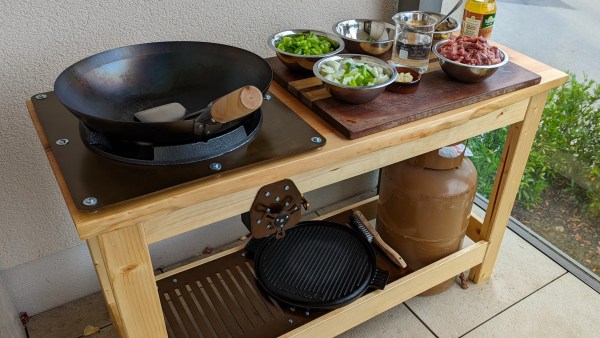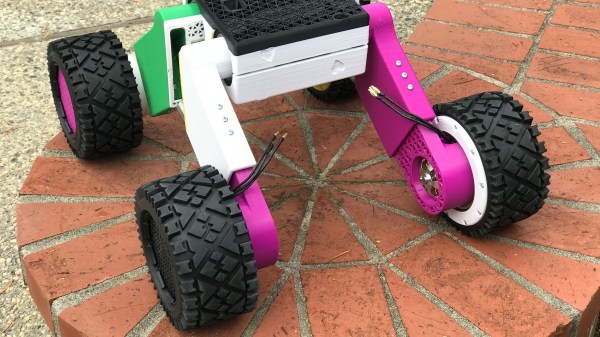[shoobs] relocated from Australia to Luxembourg, and was really missing the whole outdoor cooking scene that is apparently very common in those parts. Now living in a modest apartment building in the city, he had no easy way to recreate some of his favorite cooking methods — specifically that of Wok Hei (breath of a wok) — the art of Cantonese stir-frying which uses searing heat and a lot of flinging around of the food to mix it up with the burning oil. This results in a complex set of reactions utilizing smoking, caramelization, and Maillard reactions to produce the classic Cantonese smoky flavor. Not wanting an off-the-shelf solution [shoobs] took it on himself to build a balcony cooking station capable of the temperatures needed for Wok Hei, and documented it for our viewing pleasure.

The build started with sourcing a free-standing burner unit from Alibaba, which proved to be a little less powerful (at 30 kW) than ideal, but still sufficient. After locating a matching regulator and pressure gauge capable of the needed flow rate to feed the hungry burner, the next task was to construct a sturdy enough bench to mount it all. This was constructed from Douglas fir slabs, butt-jointed using a 3D printed drilling jig for ease of construction.
Using a flatbed scanner, the existing burner base was digitized in order to make a model suitable for laser-cutting a new mounting plate from steel. [Shoobs] isn’t lucky enough to have access to a metal-capable laser cutter — he sent his cad files off to a cutting service.
A second plate was mounted below with a sufficient gap above the bench to act as a heat shield. This keeps the wooden worktop safe from the heat. Whilst he was laser cutting steel, [shoobs] took the opportunity to design a few other custom parts to mount the regulator and other bits, because, why wouldn’t you? We reckon the end result is pretty nice, in a minimalist and understated way.
We’re no strangers to neat cooking hacks ’round these parts, here’s a nice double-sausage burner for those emergency situations and if you need a custom BBQ burner, then look no further.















